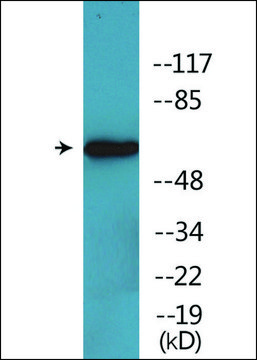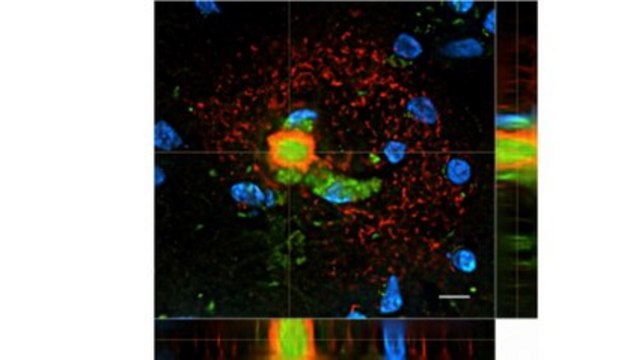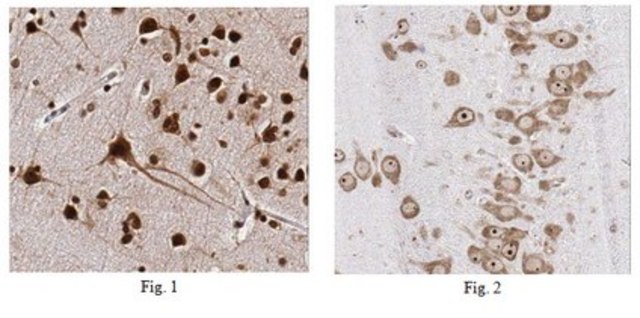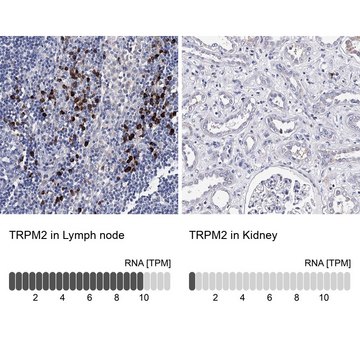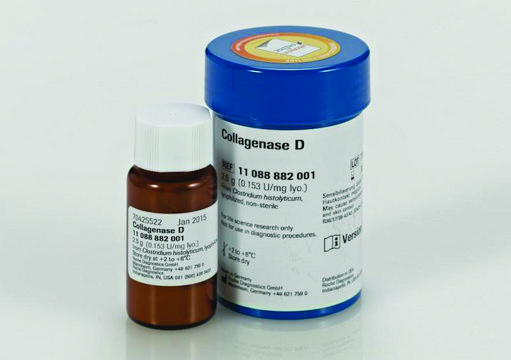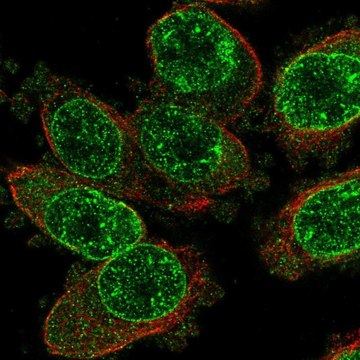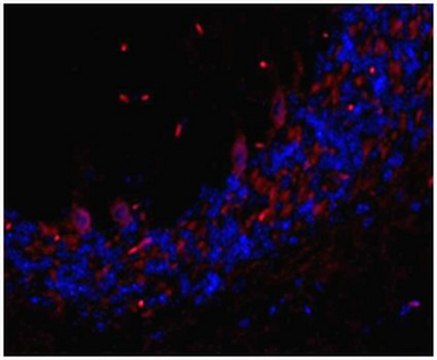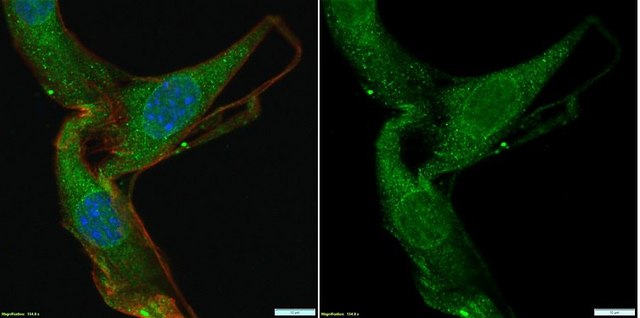MABN769
Anti-TRPM2 Antibody, clone 9D8.1
culture supernatant, clone 9D8.1, from mouse
Sign Into View Organizational & Contract Pricing
All Photos(1)
Synonym(s):
Transient receptor potential cation channel subfamily M member 2, Estrogen-responsive element-associated gene 1 protein, Long transient receptor potential channel 2, LTrpC-2, LTrpC2, Transient receptor potential channel 7, TrpC7
UNSPSC Code:
12352203
eCl@ss:
32160702
Recommended Products
biological source
mouse
antibody form
culture supernatant
antibody product type
primary antibodies
clone
9D8.1, monoclonal
species reactivity
rat
species reactivity (predicted by homology)
human (based on 100% sequence homology)
technique(s)
western blot: suitable
isotype
IgG2aκ
NCBI accession no.
UniProt accession no.
shipped in
dry ice
target post-translational modification
unmodified
Gene Information
human ... TRPM2(7226)
General description
Transient receptor potential cation channel subfamily M member 2 (EC 3.6.1.13; UniProt O94759; also known as Estrogen-responsive element-associated gene 1 protein, Long transient receptor potential channel 2, LTrpC-2, LTrpC2, Transient receptor potential channel 7, TrpC7) is encoded by the TRPM2 (also known as EREG1, KNP3, LTRPC2, TRPC7, NUDT9H, NUDT9L1) gene (Gene ID 7226) in human. The human TRPM2 is an 1,503-amino acid, six-transmembrane protein with both N- and C-termini exposed intracellularly. TRPM2 contains a pore-forming loop domain located between the fifth and sixth transmembrane region. The N-terminal cytomplasmic region of TRPM2 contains four homologous domains with unknown function and a calmodulin-/CaM-binding IQ-like motif, which is important for channel activation. Its C-terminal cytomplasmic region contains the TRP box, a coiled-coil domain required for the assembly of TRPM2 channels, and an adenosine diphosphate ribose (ADPR) pyrophosphatase domain (Nudix-like domain or NUDT9 homology domain [NUDT9-H]). ADPR binds to the NUDT9-H domain and, in the presence of Ca2+, gates channel opening. TRPM2 activation also results in hydrolysis of ADPR into adenine monophosphate (AMP) and ribose-5-phosphate. TRPM2 is a temperature-sensitive Ca2+-permeable ion channel expressed in various tissues, including brain, lungs, liver, spleen, heart, salivary gland, and pancreas. TRPM2 is involved in redox response, cell proliferation, and insulin secretion by pancreatic β cells. TRPM2 plays a pivotal role in the death of CA1 pyramidal cells and in the development of post-ischemic brain injury. TRPM2 defect is associated with central nervous system disorders such as bipolar disorder type I, amyotrophic lateral sclerosis, Parkinson’s disease, and dementia.
Specificity
Expected to react with all three spliced isoforms reported by UniProt (O94759).
Immunogen
Epitope: N-terminal cytoplasmic domain.
GST-tagged recombinant protein corresponding to the N-terminal cytoplasmic domain of human TRPM2.
Application
Research Category
Neuroscience
Neuroscience
Research Sub Category
Signaling Neuroscience
Signaling Neuroscience
Quality
Evaluated by Western Blotting in rat hippocampus tissue lysate.
Western Blotting Analysis: A 1:1,000 dilution of this antibody detected TRPM2 in 10 µg of rat hippocampus tissue lysate.
Western Blotting Analysis: A 1:1,000 dilution of this antibody detected TRPM2 in 10 µg of rat hippocampus tissue lysate.
Target description
~170 kDa observed. 171.2 kDa (isoform 1; TRPM2-L), 165.3 kDa (isoform 2), and 95.7 kDa (isoform 3; TRPM2-S) calculated. Uncharacterized band(s) may appear in some lysates.
Physical form
Mouse monoclonal IgG2aκ in supernatant without preservatives.
Unpurified
Storage and Stability
Stable for 1 year at -20°C from date of receipt.
Handling Recommendations: Upon receipt and prior to removing the cap, centrifuge the vial and gently mix the solution. Aliquot into microcentrifuge tubes and store at -20°C. Avoid repeated freeze/thaw cycles, which may damage IgG and affect product performance.
Handling Recommendations: Upon receipt and prior to removing the cap, centrifuge the vial and gently mix the solution. Aliquot into microcentrifuge tubes and store at -20°C. Avoid repeated freeze/thaw cycles, which may damage IgG and affect product performance.
Other Notes
Concentration: Please refer to lot specific datasheet.
Disclaimer
Unless otherwise stated in our catalog or other company documentation accompanying the product(s), our products are intended for research use only and are not to be used for any other purpose, which includes but is not limited to, unauthorized commercial uses, in vitro diagnostic uses, ex vivo or in vivo therapeutic uses or any type of consumption or application to humans or animals.
WGK
WGK 2
Regulatory Information
新产品
Certificates of Analysis (COA)
Search for Certificates of Analysis (COA) by entering the products Lot/Batch Number. Lot and Batch Numbers can be found on a product’s label following the words ‘Lot’ or ‘Batch’.
Already Own This Product?
Find documentation for the products that you have recently purchased in the Document Library.
Our team of scientists has experience in all areas of research including Life Science, Material Science, Chemical Synthesis, Chromatography, Analytical and many others.
Contact Technical Service